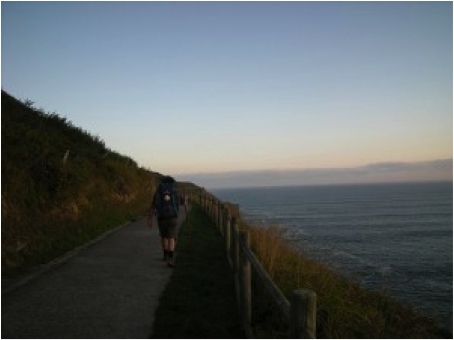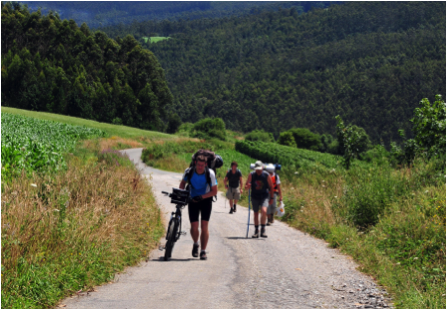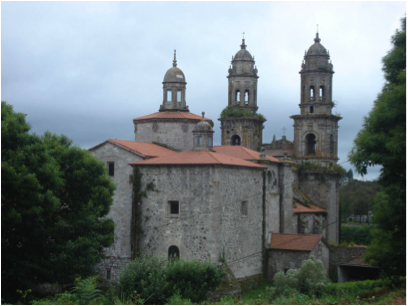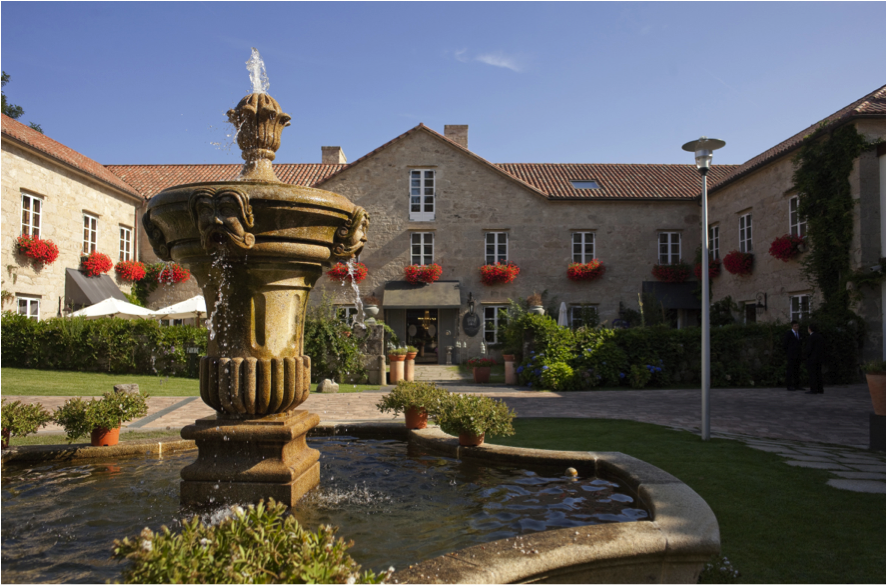The Northern Route of The Way
- Camino Santiago
- Hotel Santiago Compostela
- Traducción
-
enero 14, 2014

The Northern Route of the Camino de Santiago, also known as the Coastal Way or Northern Way, is as old as the French route. European kings used the route to get to Santiago as far back as the middle ages.
It lost some of its fame during the Reconquista of Spain (717-1492) and as a direct result of restored peace in the Southern part of Spain. For centuries it was not widely used by travelers but thanks to the increase in popularity of the pilgrimage to Santiago has experienced a boom that has brought it back to life.
The landscape and terrain are spectacular along the route which is the second longest within the peninsula after the Silver Route (sp. Ruta de la Plata).
The route begins in Irún and runs across the Cantabrian coast to Ribadeo, which is considered to be the door to Galicia as it is the first town you encounter when entering Galicia from Asturias. The route then turns away from the coast and inland toward Santiago de Compostela.
 The Northern Route combined with the Ruta de la Plata and the Portuguese Route is a great alternative to the often overpopulated and congested French Route. Some argue that it is more spiritual and has the most beautiful landscapes along its coast.
The Northern Route combined with the Ruta de la Plata and the Portuguese Route is a great alternative to the often overpopulated and congested French Route. Some argue that it is more spiritual and has the most beautiful landscapes along its coast.
The course of the Northern Route is not entirely along the Cantabrian coast but there are many kilometers that snake inland and when least expected you may catch a glimpse of steep sea cliffs and sandy beaches.
The portion of the route that passes through the Basque Country is breathtakingly beautiful. It has a mountain range where some of the peaks reach an altitude of 300 and 500 meters and consists of green valleys, wooded areas, streams, villages and coastline. Los Pasajes de San Juan (Guipúzcoa) is an especially beautiful area.
 Even though the route through Cantabria has many asphalted kilometers it is equally as stunning with beautiful valleys such as Liendo and Güemes, beaches including Berria, towns like Castro Urdiales and the magnificent city of Santander.
Even though the route through Cantabria has many asphalted kilometers it is equally as stunning with beautiful valleys such as Liendo and Güemes, beaches including Berria, towns like Castro Urdiales and the magnificent city of Santander.
The next part of the journey, which passes through Asturias, has more rural areas and is more mountainous with many inclines, although not as many as in the Basque Country. There are many small yet charming seaside villages such as Llanes, Luarca or Ribadesella (Finish line for the annual race down the Sella River).
As mentioned earlier, the arrival to Galicia in Ribadeo marks a turning point in the trail as it moves away from the coast and to the interior of Galicia. The route once again becomes mountainous as in the Basque Country. In Gontán there are inclines of 600-700 meters.
The landscape is very rural and many of the locals make their living from livestock farming. There are also many small parishes scattered throughout the land. Some of the most interesting of these are the monasteries of San Salvador (Lourenzá) and Sobrado dos Monxes and the cathedral of Santa Maria in Mondoñeso.


Once you arrive at the end of the Camino de Santiago you will have earned a well-deserved break. End your journey by letting us pamper you with a massage, spa treatments, excellent cuisine, all while you relax in the middle of beautiful natural surroundings only 10 minutes from Santiago de Compostela. All of this can be found in Hotel a Quinta da Auga. So get ready for the Camino de Santiago, we’ll be waiting for you!




No Comments
You must be logged in to post a comment.